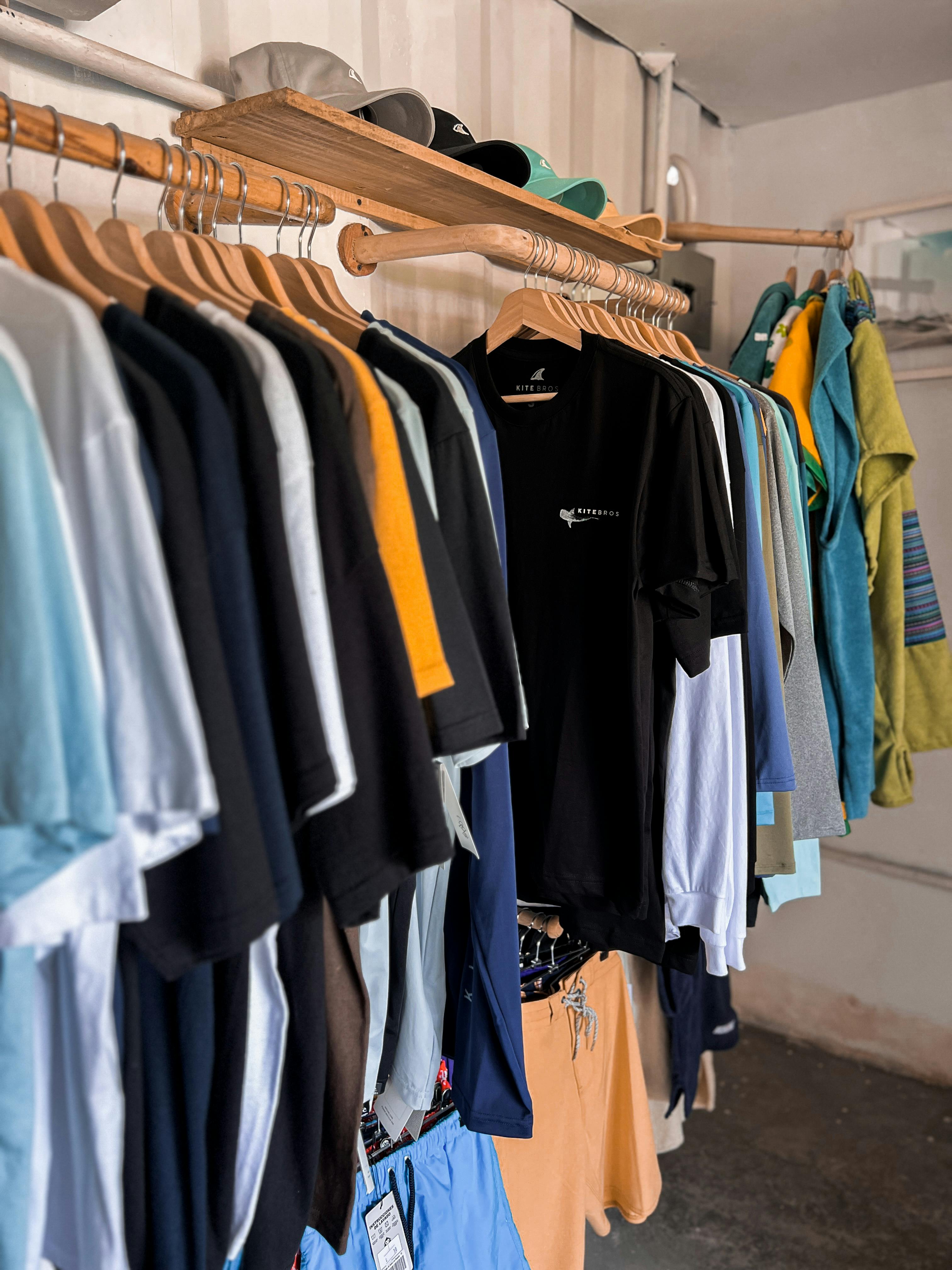Free Men???s Clothing Brand Plan Template
Men’s Clothing Brand Plan
I. Vision Statement

Our vision is to establish [Your Company Name], a trusted and innovative men’s clothing brand that prioritizes style, comfort, and sustainability in every aspect of production and distribution. By 2055, we aim to redefine men's fashion through cutting-edge technology, eco-friendly practices, and customer-centric designs that offer exceptional value without compromising the environment.
II. Goals
-
Become a market leader in the global men’s clothing industry within five years, capturing a significant share of both online and retail markets.
-
Achieve year-over-year revenue growth of 20% or more through strategic market penetration and expansion into emerging markets.
-
Expand product lines to offer a full range of men’s apparel, including casual wear, formal wear, athletic wear, and outerwear, by the third year.
-
Implement zero-waste, circular production practices across all stages of product development and distribution by 2053.
-
Establish partnerships with at least five leading environmental organizations by 2054 to promote sustainable fashion on a global scale.
III. Market Analysis
A. Industry Overview (2050-2060)
The men’s clothing industry is valued at $400 billion globally in 2050, with projections indicating continuous growth due to increased demand for sustainable fashion and tech-integrated apparel. Technological advancements, such as smart fabrics and AI-driven customization, are expected to revolutionize the way men shop for clothing. E-commerce continues to dominate, with 65% of purchases occurring online by 2053, fueled by the rise of virtual fitting rooms and immersive shopping experiences.
B. Competitor Analysis
Key competitors in the market include Sustainable Threads, TechStyle, and EcoTailor, all of which have established strong footholds in the men’s clothing market. Sustainable Threads leads in eco-friendly apparel, while TechStyle focuses on tech-enhanced clothing, offering features like temperature regulation and biometric monitoring. Our opportunity lies in combining sustainability with technology to provide men with fashion-forward, eco-conscious options that do not yet exist in the market.
C. SWOT Analysis
Strengths
-
Strong commitment to sustainability
-
Cutting-edge technology integration
-
Unique fusion of fashion and tech
Weaknesses
-
Limited initial production capacity
-
Higher production costs due to eco-friendly materials
-
New market entrant
Opportunities
-
Growing demand for sustainable fashion
-
Expansion into emerging markets
-
Increased global awareness of climate change
Threats
-
Intense competition from established brands
-
Economic uncertainty
-
Shifting consumer preferences
IV. Target Audience
A. Demographics (2050)
-
Age: 30-55
-
Income: Upper-middle-class to high-income earners
-
Location: Urban, suburban, and affluent rural areas globally
-
Education: University-educated, often with postgraduate degrees
B. Psychographics
Our target audience in 2050 consists of fashion-forward, tech-savvy professionals who are environmentally conscious and value quality and sustainability. They seek clothing that reflects their values while offering innovative features like smart fabrics that adapt to weather changes or biometric monitoring during workouts. They prioritize eco-friendly products and are willing to pay a premium for ethically sourced and technologically advanced apparel.
V. Product Development
A. Product Line Strategy
Our initial product lines will include:
-
Casual Wear: T-shirts, jeans, hoodies, and smart casuals made from recycled materials and biodegradable fabrics.
-
Formal Wear: Suits and business attire featuring anti-microbial and wrinkle-resistant technology.
-
Athletic Wear: Performance gear with moisture-wicking, temperature-regulating, and biometric monitoring capabilities.
-
Outerwear: Jackets and coats utilizing renewable energy sources for warmth and climate adaptability.
B. Sustainability Practices
By 2053, we will adopt fully circular production processes, ensuring that all products are either biodegradable or can be recycled back into new items. Our key initiatives include:
-
Organic cotton and recycled polyester for casual and athletic wear.
-
Zero-water dyeing techniques to reduce environmental impact.
-
Biodegradable packaging made from plant-based materials.
-
Blockchain-powered supply chain transparency ensures ethical sourcing and minimal carbon footprint at every stage of production.
VI. Marketing Strategies
A. Brand Positioning
We will position [Your Company Name] as a premium yet accessible brand for men who value both fashion and sustainability. Our products will appeal to those looking for stylish, comfortable, and eco-conscious options, blending modern technology with sustainable craftsmanship.
B. Digital Marketing
-
Social Media Campaigns: Leveraging platforms like Meta, TikTok, and futuristic AR platforms to engage customers with immersive content and virtual try-ons.
-
Email Marketing: Personalized content powered by AI to deliver customized offers and style recommendations based on user preferences.
-
Influencer Partnerships: Collaborations with eco-conscious influencers and tech enthusiasts to reach a wider audience.
-
SEO and Content Marketing: Optimizing for search engines and producing long-form content focused on sustainable fashion and tech-integrated apparel.
C. Traditional Marketing
-
Print Advertising: Ads in high-end fashion magazines and eco-conscious publications.
-
Outdoor Advertising: Billboards and transit ads in key markets like New York, London, Tokyo, and Dubai.
-
Pop-up Shops: Hosting temporary stores in major urban centers to allow customers to experience the brand in person before committing to online purchases.
VII. Financial Planning
A. Initial Budget (2050)
|
Category |
Amount (USD) |
|---|---|
|
Product Development |
$10 million |
|
Marketing |
$5 million |
|
Operations |
$3 million |
|
Miscellaneous |
$2 million |
|
Total |
$20 million |
B. Revenue Projections
|
Year |
Revenue |
Growth Rate |
|---|---|---|
|
Year 1 (2051) |
$10 million |
N/A |
|
Year 2 (2052) |
$12 million |
20% |
|
Year 3 (2053) |
$14.4 million |
20% |
VIII. Appendices
For more detailed insights and data, refer to the following resources:
-
Smith, J. (2050). "The Future of Men's Fashion: Sustainability Meets Technology." Fashion Journal, 52(1), 45-78. https://doi.org/xx.xxx/yyyyy
-
Doe, A. (2051). "Eco-Friendly Innovations in Clothing Manufacturing." Green Textile Journal, 60(4), 34-56. https://www.ecotextiles.org/articles/abc123